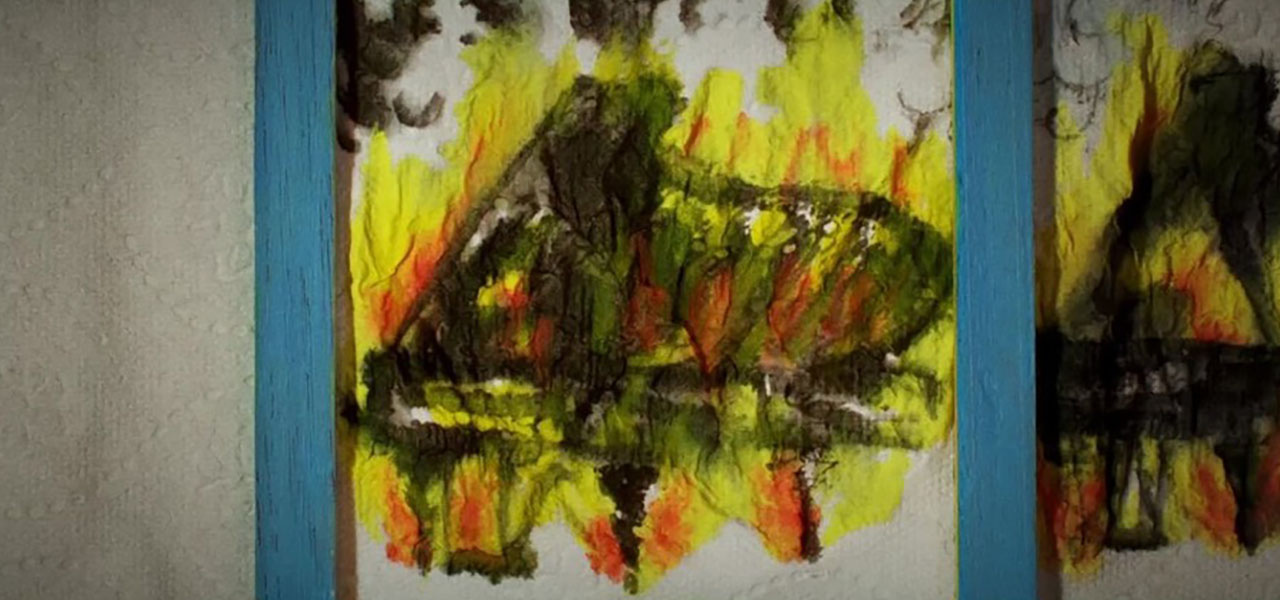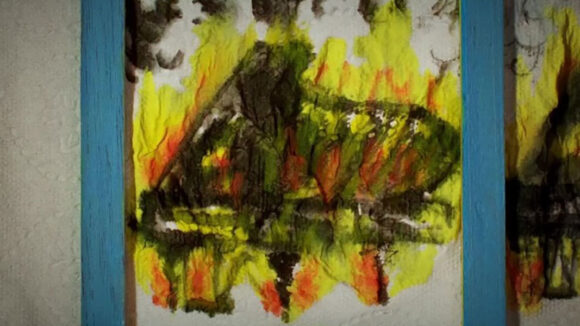

Oscar Shortlist Interviews: Director Anna Samo Shares Her Favorite Shot From ‘The Wild-Tempered Clavier’ (Exclusive)
Cartoon Brew invited the filmmakers behind each of this year’s 15 Oscar-shortlisted animated shorts to share their favorite shot from their film and explain why it’s special to them. The pieces are being published in the order that materials were received.
In this piece, we’re looking at the The Wild-Tempered Clavier from director Anna Samo.
Animating on toilet paper, Samo tells the story of an artist struggling to cope with the uncertain and chaotic world around them. How does one keep playing — or animating – as war rages somewhere. The Wild-Tempered Clavier’s unique approach draws on Bach’s timeless music and the heritage of animation painted directly on 35mm film.
Samo recently spoke with Cartoon Brew about the making of the short. Below, she shares her favorite shot from the film and tells us about its significance:
This shot comes towards the end of the film and combines many elements which appeared earlier in a way that I hope will make the audience feel the triumph of music and art, despite the presence of violence and destruction.
The camera is positioned very close to the machine that moves the toilet paper strip with the painted animation. The shot is packed with fast-paced action, ignited by the emotional explosion in the music. We see a soldier morph into a firing tank, right after that a person trips and almost falls, and then a grand piano bursts into flames and breaks down. Next, we see the pianist, who wasn’t able to approach the instrument during the whole film, open the top of an undamaged grand piano and sit down to finally play the instrument.
The image of the burning grand piano was on my mind very early in the process of making The Wild-Tempered Clavier. It was one of the few drawings I made in my sketchbook while working on the film. I did not know where exactly it belonged, but it felt important. While doing some research, I realized there were many stories connected to a burning piano. The Scottish artist Douglas Gordon, created a very impressive video installation featuring a grand piano burning in a landscape where the border of the Roman Empire used to be. He titled his work nothing less than “The End of Civilization.” Many contemporary musicians composed for and performed on pianos set on fire. I also learned about the tradition of Air Forces to hold piano-burning ceremonies to commemorate fallen pilots and there are many curious myths about the origins of this tradition.
There is something incredibly dramatic and complex about the image of the burning piano – it contains the feeling of destroyed culture, violated life, barbarism, and at the same time this image could be a metaphor for the wild emotions that cannot be kept inside anymore.
It was important for me to give the film a hopeful ending. So, it felt right to place the image of the musician who opens the grand piano and sits down to play it right after the image of the burning instrument. I like the idea that music cannot be destroyed, that even if a piano is burned there will be another one that will be played. The grand piano here is like a phoenix bird bursting into flames just to be reborn. It is a very fragile triumph though. And a different thought has crossed my mind recently: Maybe the piano has to be burned, so that the musician has a story to tell through the music.
Read the other entries in the series:
